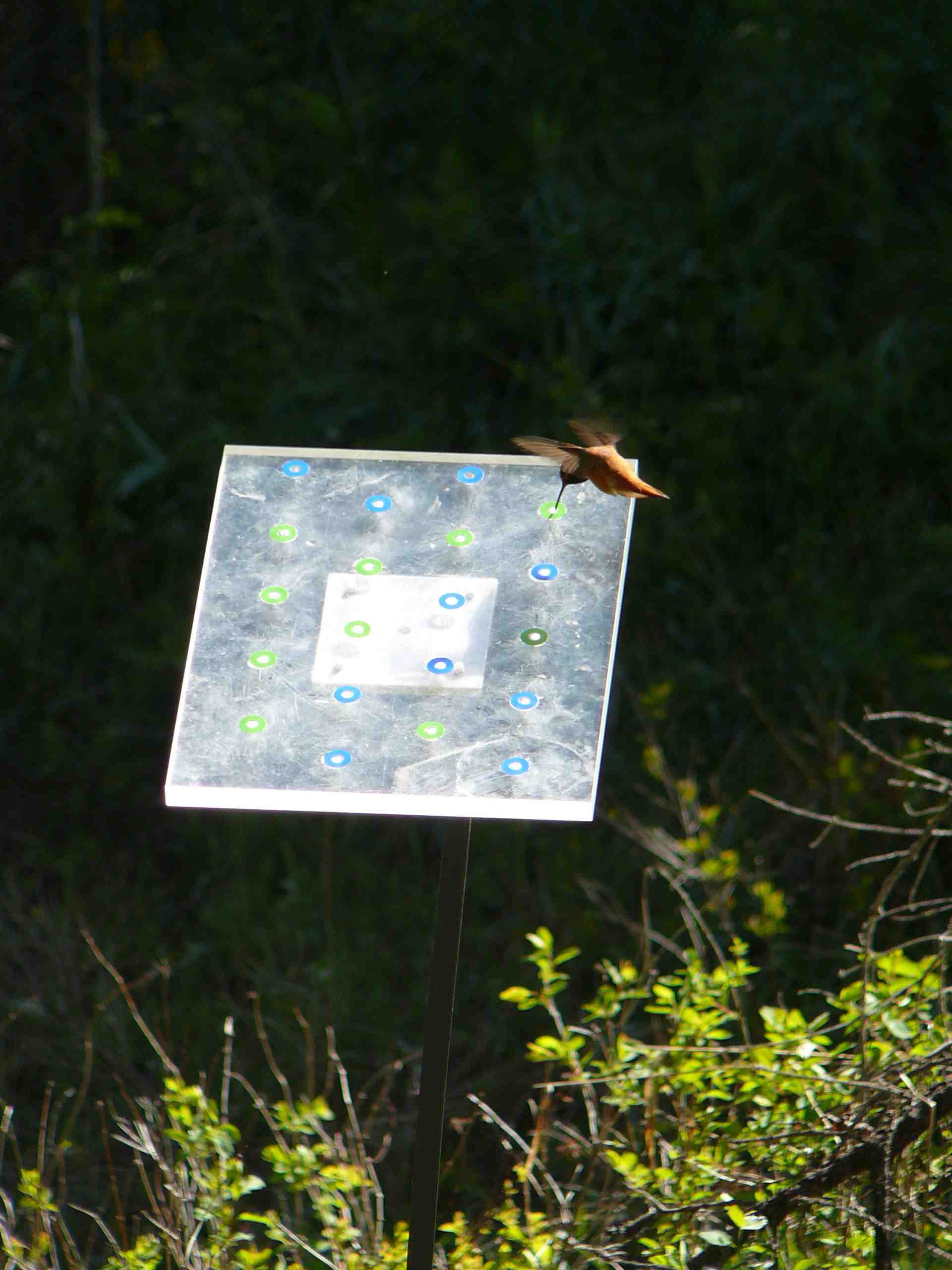Risk Sensitivity
Animals will often base their decision about where to forage on how variable a resource is as well as the size of the mean reward they can get from it. This is know as risk sensitive foraging.
In the image below, a hummingbird chooses between two colours of artificial flower. The flowers are wells drilled into a plexiglass plate with coloured paper marking their edges. All the flowers contain 30 microliters of nectar. In the green flowers this nectar is a 30% sucrose solution, whereas in the blue flowers half contain a 50% solution and half a 10% solutions. Although both the green and blue flowers provide the same reward on average, the hummingbirds prefer the green, more predictable flowers.
We have found that both prior and current conditions affect how risk-averse birds are. Poor reward levels prior to or during tests result in greater risk aversion than when rewards are better (average volumes are higher).
